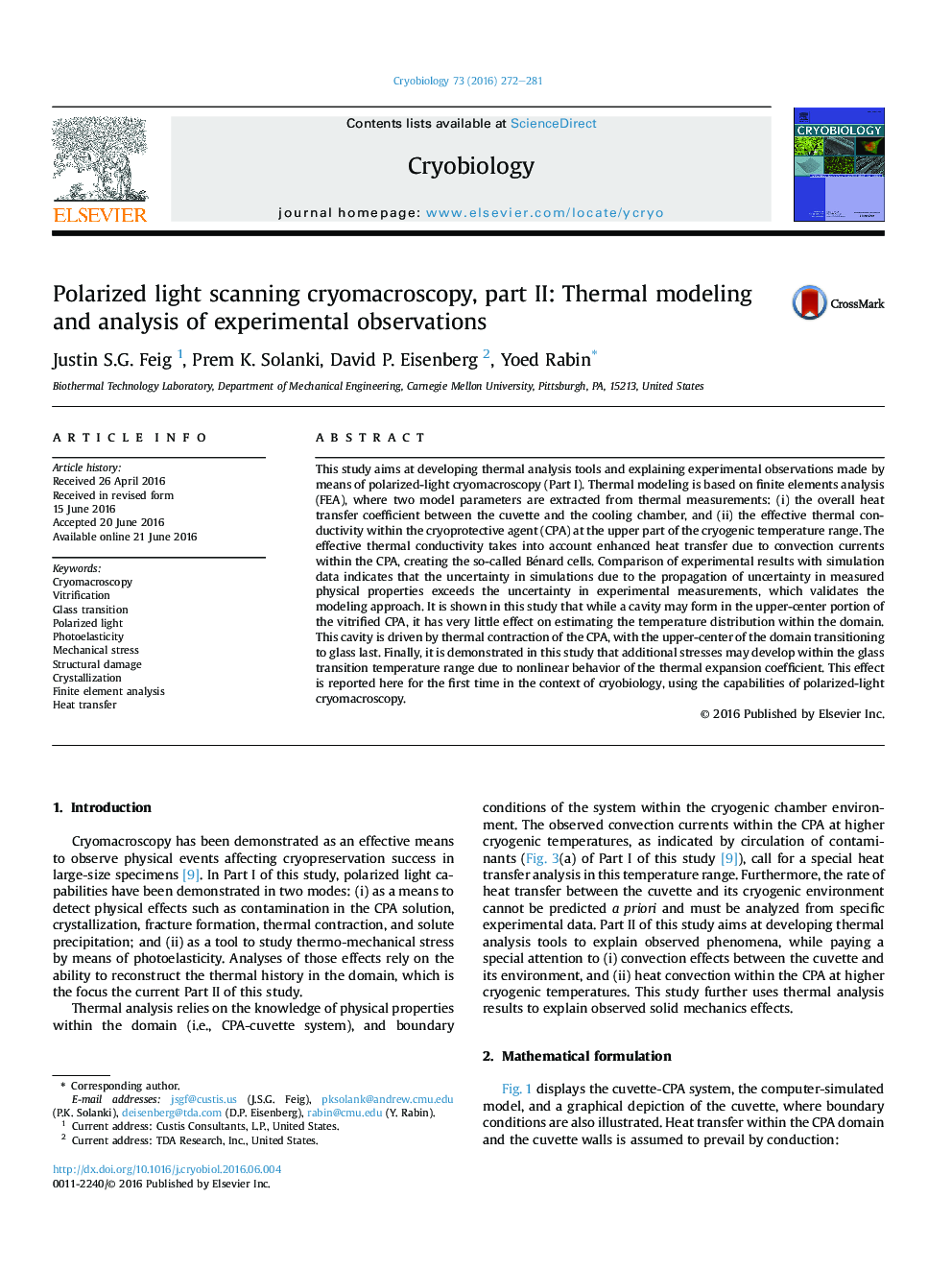| Article ID | Journal | Published Year | Pages | File Type |
|---|---|---|---|---|
| 5530830 | Cryobiology | 2016 | 10 Pages |
This study aims at developing thermal analysis tools and explaining experimental observations made by means of polarized-light cryomacroscopy (Part I). Thermal modeling is based on finite elements analysis (FEA), where two model parameters are extracted from thermal measurements: (i) the overall heat transfer coefficient between the cuvette and the cooling chamber, and (ii) the effective thermal conductivity within the cryoprotective agent (CPA) at the upper part of the cryogenic temperature range. The effective thermal conductivity takes into account enhanced heat transfer due to convection currents within the CPA, creating the so-called Bénard cells. Comparison of experimental results with simulation data indicates that the uncertainty in simulations due to the propagation of uncertainty in measured physical properties exceeds the uncertainty in experimental measurements, which validates the modeling approach. It is shown in this study that while a cavity may form in the upper-center portion of the vitrified CPA, it has very little effect on estimating the temperature distribution within the domain. This cavity is driven by thermal contraction of the CPA, with the upper-center of the domain transitioning to glass last. Finally, it is demonstrated in this study that additional stresses may develop within the glass transition temperature range due to nonlinear behavior of the thermal expansion coefficient. This effect is reported here for the first time in the context of cryobiology, using the capabilities of polarized-light cryomacroscopy.
